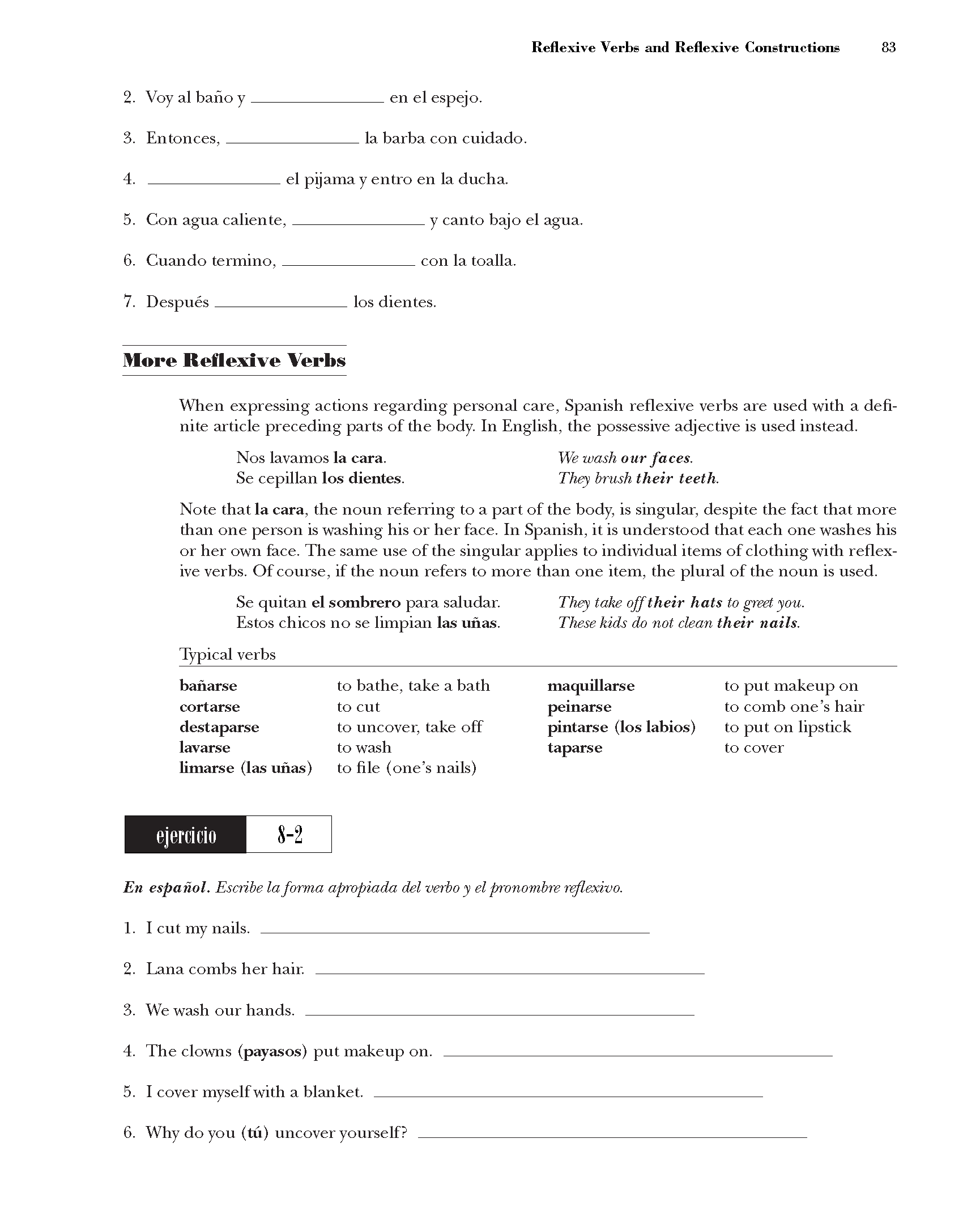CSG094

83
Reflexive Verbs and Reflexive Constructions
2.
3.
4.
5.
6. 1.
Voy al bano y_en el espejo.
Entonces,_la barba eon cuidado.
_el pijama y entro en la ducha.
Gon agua caliente,_y canto bajo el agua.
Guando termino,_eon la toalla.
Despues_los dientes.
Morę Reflexive Verbs
When expressing actions regarding persona! care, Spanish reflexive verbs are used with a defi-nite article preceding parts of the body. In English, the possessive adjective is used instead.
Nos lavamos la cara. We wash our faces.
Se cepillan los dientes. They brush their teeth.
Notę that la cara, the noun referring to a part of the body, is singular, despite the fact that morę than one person is washing his or her face. In Spanish, it is understood that each one washes his or her own face. The same use of the singular applies to indmdual items of clothing with reflex-ive verbs. Of course, if the noun refers to morę than one item, the plural of the noun is used.
Se quitan el sombrero para saludar. They take off their hats to greet you.
Estos chicos no se limpian las unas. These kids do not clean their nails.
Typical verbs
|
banarse |
to bathe, take a bath |
maquillarse |
to put makeup on |
|
cortarse |
to cut |
peinarse |
to comb one ’s hair |
|
destaparse |
to uncover, take off |
pintarse (los labios) |
to put on lipstick |
|
lavarse |
to wash |
taparse |
to cover |
|
limarse (las unas) |
to file (one’s nails) |
ejercicio
En espańol. Escńbe la forma apropiada del verbo y el pronombre reflexivo.
1. I cut my nails. _
2. Lana combs her hair. _
3. We wash our hands. _
4. The clowns (payasos) put makeup on. _
5. I cover myselfwith a blanket. _
6. Why do you (tu) uncover yourself? _
Wyszukiwarka
Podobne podstrony:
CSG100 89 Reflexive Verbs and Reflexive Constructions 6. No__(dormirse/tu) 7. Yengan y_ el abrigo.
CSG140 The Passive Voice and Passive Constructions 129 12-7ejercicio En la cocina. iComo se preparat
CSG092 Unit 8Reflexive ferbs and Reflexive Constructions Reflexive verbs are used in reflexive const
CSG102 Reflexive Verbs and Reflexive Constructions 91 8-11ejercicio En la tienda. Traduce. Usa el vo
CSG104 93 Reflexive Verbs and Reflexive Constructions • Use hacerse + noun or adjective to express t
CSG096 Reflexive Verbs and Reflexive Constructions 85The Tse of Reflexive Terbs in Spanish Reflexive
CSG098 87 Reflexive Verbs and Reflexive Constructions Basic meaning Reflexive
więcej podobnych podstron